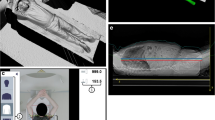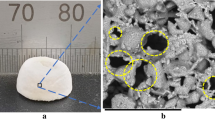Abstract
Magnetic resonance imaging (MRI), computed tomography scanning (CT scan), and ultrasound imaging techniques (UI) were used for data acquisition to construct/develop a 3D solid model of the human tibia, femur, and skull. CT scan was found to be an acceptable technique for cadavers. CT scans are harmful to the human body in large doses, while MRIs and ultrasound are known to be safe. However, MRIs form a better tool in performing this image generation task for living beings because of its high resolution capacity when compared with images obtained using ultrasound techniques. High resolution poses to be a very important factor, as the consideration of various material properties of the bones was part of the emphasis of this research. MRIs have the capacity of displaying a distinct boundary between the muscles and the bone, in addition to the boundary between the cortical and the cancellous region within the bone. Ultrasound was found to be the cheapest technique and gave reasonably good results for just the outside boundaries of the bone. The models of the human bones were generated on a Computer Aided Design (CAD) system. The cross-sections obtained from (MRI, CT, or UI) were scanned into the computer. Image processing software was used to detect the boundaries of the bones. A C + + program was used to read the coordinates of the edges and construct a B-spline curve on the CAD system. The curves were converted to a B-rep solid using skinning. The solid models were meshed, constrained, and material properties were assigned to different regions of the models for Finite Element Analysis (FEM).
Similar content being viewed by others
References
Department of Transportation, NHTSA Docket No. 69-7, Notice 19, “Occupant Crash Protection-Head Injury Criterion,” S6.2 of MVSS No. 208
Sprawls P: The Principles of Computer Tomography Image Formation and Quality, Essentials of Body Computed Tomography. Saunders, 1990, pp 1–9
Mehta BV, Patel JV, Mulabagula R: FE Analysis of the Human Skull. Proceedings of the 9th Int. Conf. on Math. and Computer Modeling, Berkeley, CA, July 26–29, 1993
Anzelius A: The effect of an impact on a spherical man. Acta Pathol Microbiol Scand 48:153–159, 1943 (suppl)
Mehta BV, and Rajani S: Static and Dynamic Analysis of the Human Tibia, Computer Simulations in Biomedicine, Edited by Hart and Powers, Comp. Mechanics Pub., 1995.
Mehta BV, Mulabagula R: Finite element analysis of the human skull considering the brain and bone material properties, in Middleton (ed): Computer Methods in Biomechanics and Biomedical Engineering. Swansea, UK, Gordon and Breach, 1996
Mehta BV, Rajani S: 3-D Modeling and Analysis of the Human Tibia using MRI and Ultrasound Imaging. Biosignal ’94 Proceedings, Brno, Czech Republic, June 26–28, 1994
Author information
Authors and Affiliations
Additional information
Supported by Stocker Research Fund and the 1804 Foundation, Ohio University, Athens, OH.
Rights and permissions
About this article
Cite this article
Mehta, B.V., Rajani, S. & Sinha, G. Comparison of image processing techniques (Magnetic resonance imaging, computed tomography scan and ultrasound) for 3D modeling and analysis of the human bones. J Digit Imaging 10 (Suppl 1), 203–206 (1997). https://doi.org/10.1007/BF03168701
Issue Date:
DOI: https://doi.org/10.1007/BF03168701




